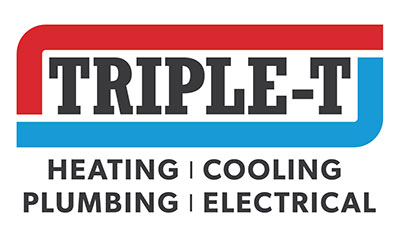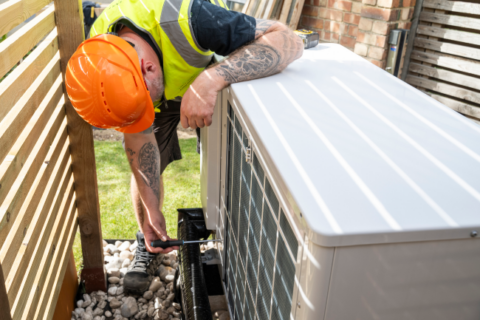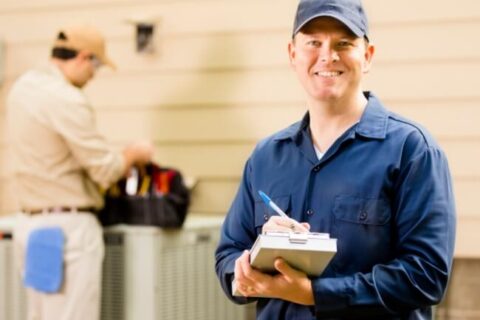The Different Types of Home Heating Systems
Every year when cold temperatures and snow return to Utah, residents and businesses turn to their heating systems to help them stay comfortable. Are you satisfied with the type of heater you have, or are you interested in trying something new? Consider all your options to help you make the right choice for your lifestyle and home heating needs.
Furnaces
Furnaces are the most common home heating method in the United States. They heat the air using natural gas, electricity, propane, or oil. Then, the heated air is distributed throughout the house via ductwork installed above the ceiling or below the floor.
A furnace may be right for you if your home already has ductwork. Otherwise, the cost to install the necessary air ducts could be cost-prohibitive. You have plenty of brands and features to choose from, with the promise of low operating costs as long as the furnace is installed correctly.
Air-Source Heat Pumps
Heat pumps are the fastest-growing segment of home HVAC systems. They use electricity to move heat rather than combusting it from fossil fuel. Air-source heat pumps can heat homes in the winter with incredible efficiency. Then, thanks to a reversing valve, they can also cool buildings in the summer, making them a heater and air conditioner in one.
A heat pump could be the right choice if your home already has ductwork and electricity is the only fuel source available to you. It’s also a great way to utilize solar energy if your home has solar panels. Just be aware that heat pumps operate less efficiently when the temperature drops below freezing outside. When this happens, backup electric resistance coils kick on to keep your home comfortable, but your heating bills increase as a result.
Dual-Fuel Heating Systems
Also called hybrid heating, this solution combines the energy efficiency of an electric heat pump with the power of a gas furnace. Under normal conditions, the heat pump is enough to keep your home comfortable while ensuring the lowest possible operating costs. Then, when the temperature plummets outside, the furnace serves as a more energy-efficient backup heat source than electric resistance coils.
A dual-fuel heating system could be an ideal choice if your home already has ductwork and you want more efficient heating than a furnace/AC combination or heat pump alone could provide. Just be prepared for a higher purchase and installation cost.
Boilers
Boilers are more common in the UK, but they are still found in older homes in the US. They generate hot water or steam using natural gas, electricity, oil, propane, or biodiesel fuel. The resulting hydronic heat is then distributed throughout the house in one of three ways:
- Steam radiators, one of the oldest home heating systems still in use today
- Hot water baseboard heating, similar to radiators but in the less conspicuous form of wall-mounted baseboard units
- Radiant floor heating, comprised of flexible hoses installed beneath the floor
A boiler could be right for you if your home doesn’t have ductwork. People with this heating system also report enhanced indoor comfort. After all, radiant heat rises from the floor up, thoroughly heating everything in the room. This differs from forced-air heat that swirls around your head. The lack of blowing air is also beneficial for those with allergies and asthma. Just be aware that boilers are more expensive to install than other HVAC systems, and radiant heating takes longer than forced air to heat a space.
Ductless Mini-Splits
This flexible home heating system has gained popularity in recent years. Ductless mini-splits operate similarly to heat pumps, using electricity to move heat between indoor and outdoor air. They also feature a reversing valve to run in reverse for summertime cooling.
The difference is that mini-splits feature wall-mounted units with built-in air handlers, eliminating the need for ductwork. Several indoor air handlers can connect to a single outdoor unit, allowing you to customize where you deliver heating and cooling within your home.
A mini-split system could be right for you if you don’t have ductwork and want the option to heat and cool rooms individually, an energy-saving technique known as zoning. Just be aware that you may need to install a cold-climate model to combat Utah’s frigid winters.
Geothermal Heat Pumps
As the world’s most energy-efficient heating and cooling system, geothermal heat pumps use electricity to move heat between your home and the ground around it. Installation involves burying a matrix of pipes, called a loop, near the house.
Geothermal heating and cooling could be a good fit if you want the lowest possible utility bills. This system is even more efficient if you have solar panels. Just be prepared for a high installation cost. You also need enough land around your home to install the loop, and you must adhere to local laws and zoning ordinances.
Electric Resistance Heating
Several heating systems run on electric resistance coils. These include:
- Radiant heating consisting of panels installed in the floor, ceiling, or wall
- Electric baseboards that pull cool air in at the bottom of the unit and release heated air out of the top
- Space heaters that plug into the wall and produce supplementary heating wherever you position them in the house
Electric heating could be right for you if your home lacks ductwork and you have no other fuel source available. However, electric resistance coils are the most expensive way to heat a home. Mini-splits are usually a superior choice for ductless electric home heating.
Select & Install a Home Heating System Today
Whether you’re building a new house or gearing up to replace your aging heating system, the HVAC service experts at Triple T Heating, Cooling & Plumbing can help you make the best selection. We have been performing heating system repair and replacement since 1974. Contact us today to schedule the services you need. You can reach us at 801-798-7711 if you live in Utah County or 435-275-4011 if you’re a Washington County resident.


